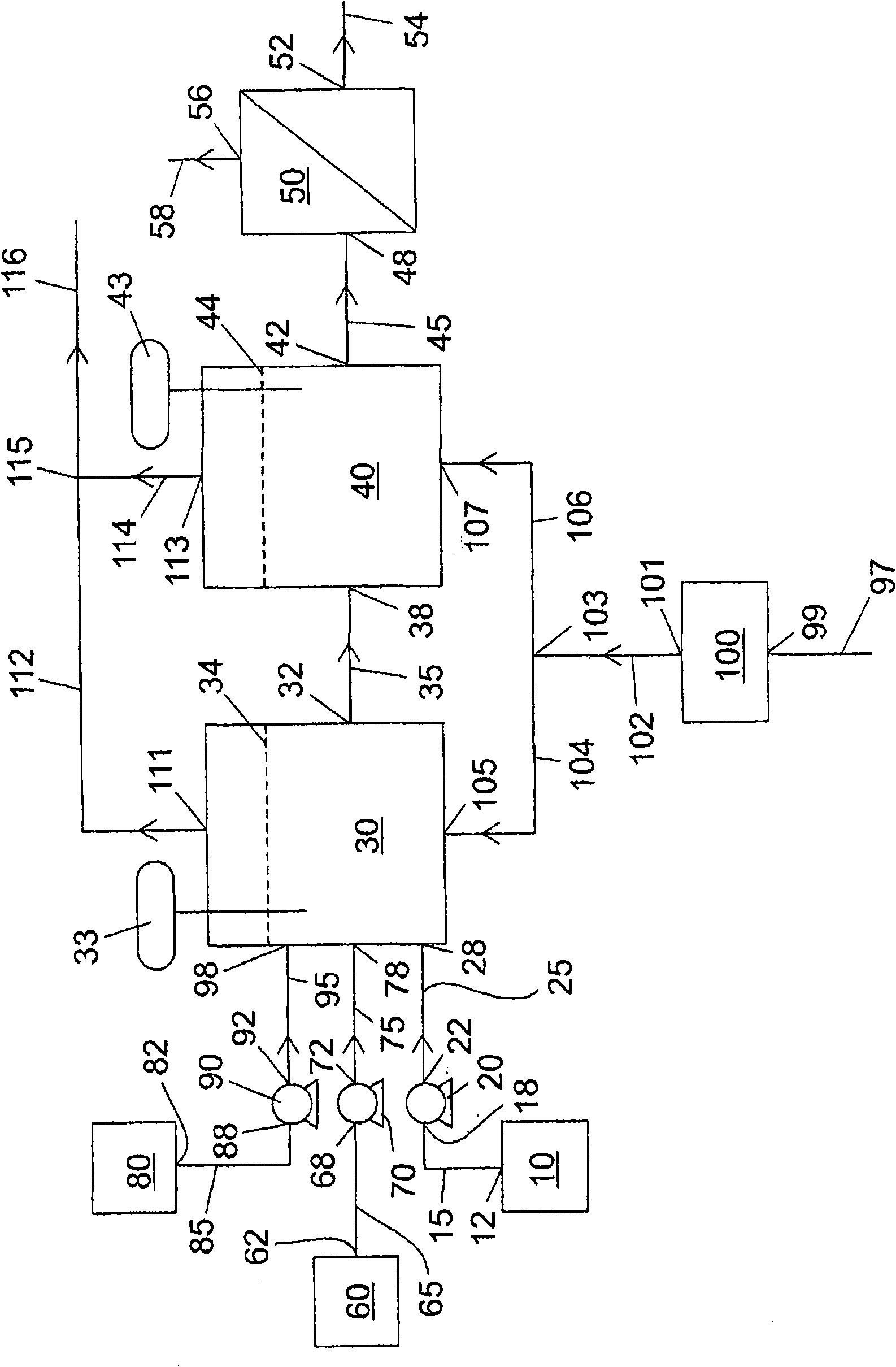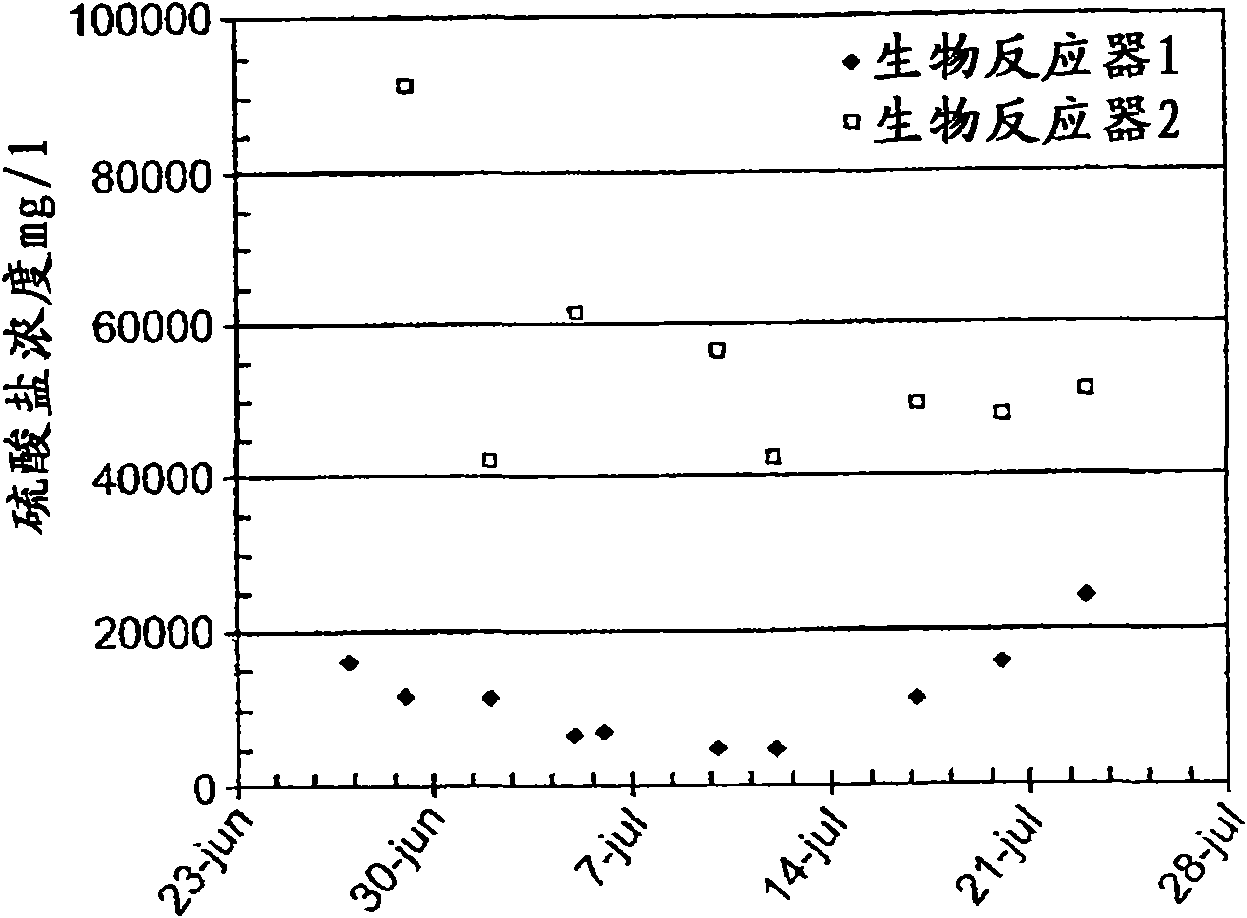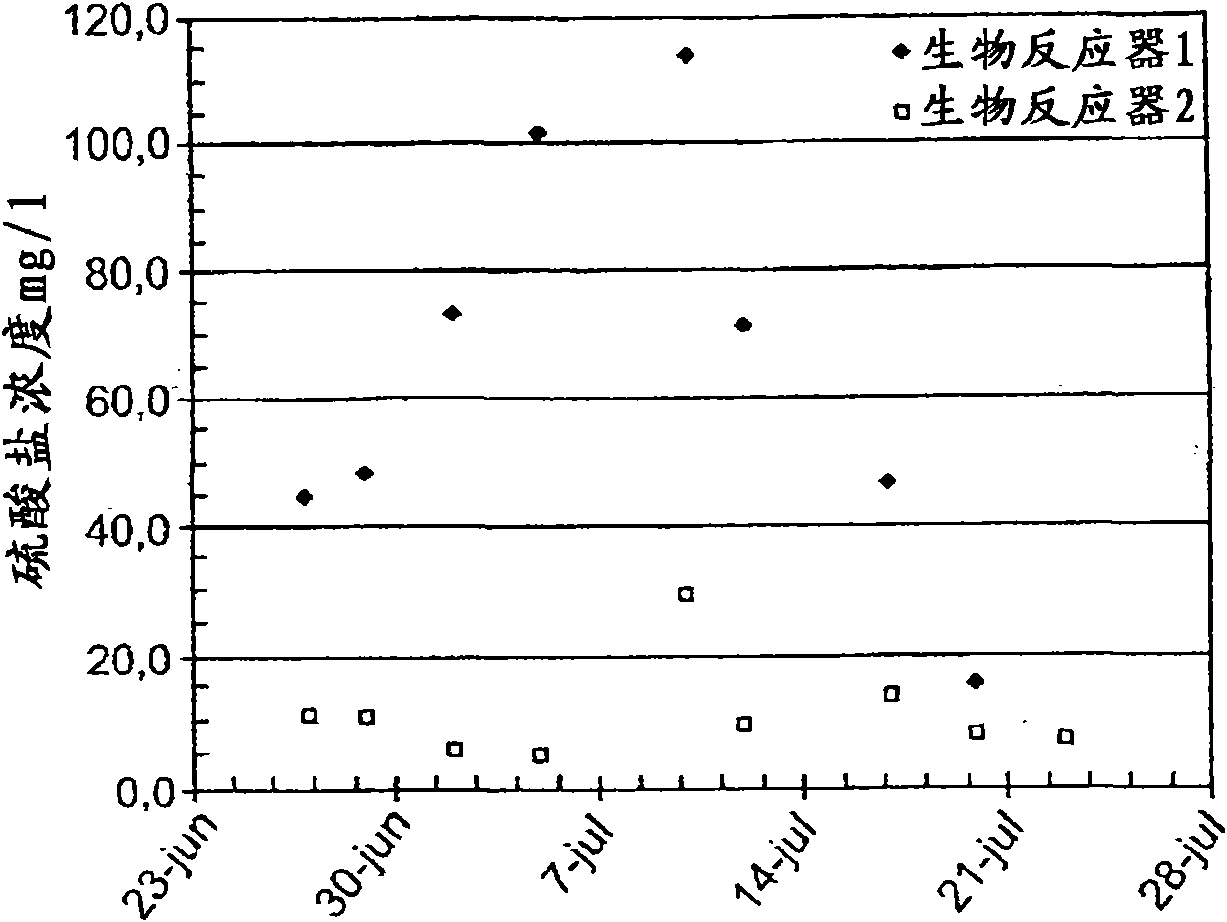Method and apparatus for biological treatment of spent caustic
A biological treatment and bioreactor technology, applied in biological water/sewage treatment, water/sewage treatment, water treatment parameter control, etc., can solve problems such as large reactors
- Summary
- Abstract
- Description
- Claims
- Application Information
AI Technical Summary
Problems solved by technology
Method used
Image
Examples
Embodiment 1
[0089] Two standard bioreactors of 2 l working volume each were provided and configured to work as continuous cultures. Inoculate the bioreactor with sludge. SOB is taken from full size H mixed with SOB from soda lake 2 S oxidation device. The temperature of the bioreactor was controlled at 30°C by a water jacket, providing an internal temperature of 28±1°C in both reactors.
[0090] The redox potential and pH of each bioreactor were measured online using the redox potential. Nutrients are supplied intermittently by pulse / intermittent pumps or manually. An air supply was provided to the bioreactor to aerate the solution. Set the aeration level so that the redox potential is greater than -100 mV / cm. The air supply is adjusted using a humidifier so that humid air is supplied to the bioreactor. The humidity level of the air supply was set to maintain the liquid level in the bioreactor at a constant level.
[0091] Table 2 shows the composition of the synthetic spent causti...
PUM
| Property | Measurement | Unit |
|---|---|---|
| Conductivity | aaaaa | aaaaa |
| Conductivity | aaaaa | aaaaa |
Abstract
Description
Claims
Application Information
 Login to View More
Login to View More - R&D
- Intellectual Property
- Life Sciences
- Materials
- Tech Scout
- Unparalleled Data Quality
- Higher Quality Content
- 60% Fewer Hallucinations
Browse by: Latest US Patents, China's latest patents, Technical Efficacy Thesaurus, Application Domain, Technology Topic, Popular Technical Reports.
© 2025 PatSnap. All rights reserved.Legal|Privacy policy|Modern Slavery Act Transparency Statement|Sitemap|About US| Contact US: help@patsnap.com



